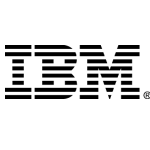Generic
Prepare your organization for API
28/08/2017 | Written by: Think Blog Editor
Categorized: Generic
Share this post:
The impact of the API economy on business models is already being frequently discussed. Considerable attention is also being paid to the new requisite competencies and technological support. The organization itself is in the spotlight far less frequently. How do you groom your structure for this new form of activities?
First a few words about APIs: these interfaces make data and applications available for internal and external developers, customers and other organizations, to mention just a few examples. Systems and data sources can be accessed using ‘self-service’. Data from diverse sources is combined; this data is then used to enrich existing products and services and develop new items. Gradually a full-blown API economy is created.
When setting up an API-friendly environment, multiple factors play a role: the perspective, the driving forces behind and the objectives of business, the organization’s maturity level in terms of APIs and – finally – the existing structure of the organization. In many cases, it will be necessary to modify the organization: new roles will have to be filled and other collaborative ventures created. You must also ensure that the change is regarded as part of a broader digital transformation, and not as just one more in a series of IT projects.
Perspective
The most successful companies regard APIs as a new method for approaching the market and use them for this purpose. Their objective is to offer the business the possibility to operate more quickly, to approach new customers and to innovate the business. Other organizations have recognized the potential, but are still in a learning phase. In the old structure, this was quite feasible.
IBM has developed an API Journey MAP to indicate API maturity: the extent to which organizations are actually ready to implement API initiatives. In the five steps that IBM describes – unstructured, consciously experimenting, specifically market-oriented, fully digitized and ultimately transformative –the organization generally starts from IT, after which the business becomes increasingly involved and ultimately takes the leadership. This pattern can be compared with the method by which the Internet was originally embraced.
Organization
Where, on the one hand, APIs have the potential to disrupt the market, organizations want to prevent having too (disruptive) an impact on the market. If you consider APIs as a new method for approaching the market, you still have to set up an organization. The IT function will continue to serve as the guardian of the requisite infrastructure and processes. To start, IT must implement an API management solution. This can be in the cloud, on-site or in a hybrid model. In terms of architecture, security and life cycle management, everything is integrated into the existing IT landscape.
The IT function also plays a role in both the development and in ‘running’ the APIs operationally. In a centrally organized IT situation, both these competencies are conducted in an API core team, that together with API business owners and API product managers – for whom the business need is leading – receives input from the rest of the organization.
![]()
This figure depicts the ideal situation. In a (more) decentralized IT setup, interaction with stakeholders from outside IT is already taking place and structure modification may not be as compulsory.
IBM’s API Connect management solution can also be utilized in both these situations: both centrally, as a multi-tenant environment that can be accessed by multiple lines of business (LoBs) based on their individual needs.
In any event: when an organization wants to take steps toward an API economy, this initially involves support for these initiatives from the business: growth, better customer contact, faster execution and being able to flexibly capitalize on changes. As an organization you have to be ready for this. Learn more about the structure of API-driven organizations.
Download a test version of IBM API Connect >>>
Automate work and accelerate business growth
Many companies need help to navigate the rapid changes that define today’s business environment. To improve their responsiveness and flexibility, they are looking for new ways of conducting business, rethinking their processes, and investing in digital transformation projects to increase the robustness of their operations. They rely on business automation technologies to cut out repetitive […]
Sustainability and the technologies enabling the transition
Creating a sustainable future demands significant technological innovation to decarbonize society, restore biodiversity and ecosystem health, foster thriving oceans for sustenance and economic growth, remove atmospheric carbon, transition to sustainable agriculture, and advance eco-friendly cities that align with our vision for a better future. Generative AI has achieved much in recent years and now surpasses […]
Technology in action at Think Summit 2021
Covid 19, the energy transition and climate change require business agility… right away! Organizations that are slowly starting their digital transformation are irrevocably overtaken by competitors: companies that can quickly realize new, sustainable business models with a remote workforce. How can organizations leverage innovations such as AI, machine learning and hybrid cloud to make […]



